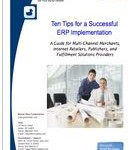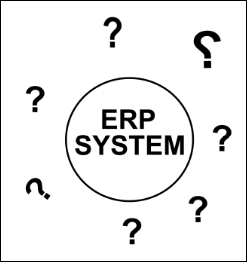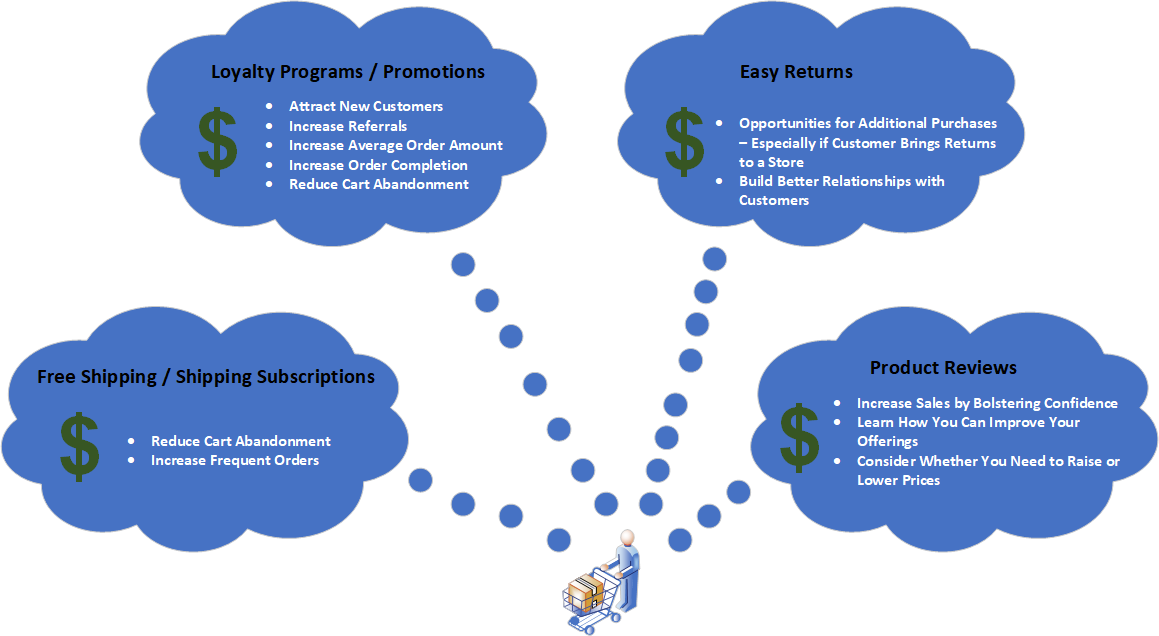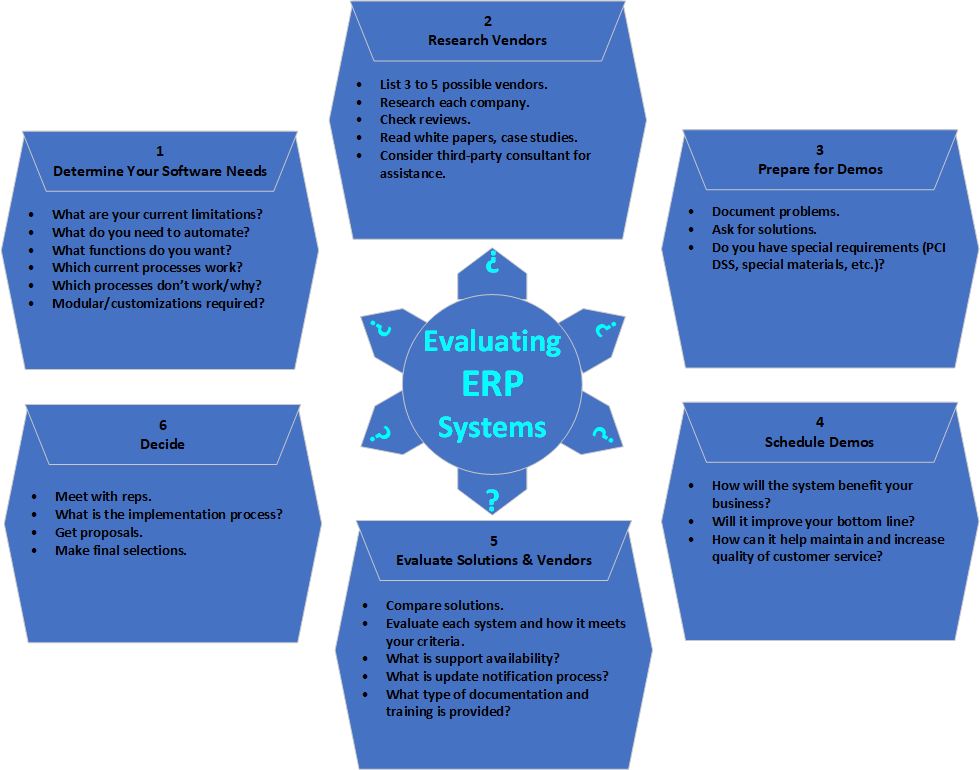Avoid These 7 Dreaded Mistakes in Your eCommerce Store
 Online shoppers expect certain features. It’s easy to find web stores that provide everything they’re looking for, so you have to make sure you provide it too. Shoppers expect reviews, detailed information, fast results, and quick and easy checkout. And they want it wherever they happen to be and using whatever device they happen to pick up. Don’t make these mistakes in your eCommerce store.
Online shoppers expect certain features. It’s easy to find web stores that provide everything they’re looking for, so you have to make sure you provide it too. Shoppers expect reviews, detailed information, fast results, and quick and easy checkout. And they want it wherever they happen to be and using whatever device they happen to pick up. Don’t make these mistakes in your eCommerce store.
Not asking for reviews – Shoppers expect reviews and like the reassurance they provide about the items they’re considering. If your eCommerce store doesn’t have them, you could be missing out on sales. Questions and answers are also common, and if your customers have questions of their own, they’ll check those too. If they can find the information on your website, they might order the item from another web store that has the answers they’re looking for.
Not having a good search function– Shoppers spend just seconds deciding whether to make a purchase. If they cannot quickly zero in on what they are looking for on your website, you may as well not sell it. When shoppers search for something specific, it means they know what they want, and they don’t want to work hard to find it.
No responsive design – If your site is not compatible with all devices, you could be turning your back on sales! Shoppers use a variety of devices to shop – mobile phones, tablets, and desktop computers. If they can’t easily navigate your site with whatever they happen to be using, they’ll leave. Welcome all shoppers into your web store by making sure it uses Google’s recommended Responsive Design plan, which automatically adjust to the sizes of all devices customers are using to provide optimal presentation without requiring multiple websites.
No communications – When shoppers leave items in their carts, messages with links to the carts can remind them or help guide them to checkout. A series of 2-3 messages at specific intervals provides subtle reminders that keep you in mind. A promotion code provides extra incentive to return and perhaps add a few more items to the cart before checkout.
No improvements – Make sure you stay on top of your eCommerce site. Give customers quality product, unique items, and keep your store fresh.
Slow page load times – Really, who wants to wait for any website to load? This is as important as getting quick search results, so make sure your website loads quickly.
Checkout is too complicated – If the checkout process requires customers to create an account, or if there are unexpected fees or high shipping amounts, shoppers might not complete the checkout process. Keep the checkout process simple and quick. Reveal all fees up front and show your shoppers the checkout flow to let them know what to expect. Keep it efficient with as few steps as possible. Giving customers an up-front shipping estimate, or the option to bypass registration (when appropriate) can eliminate some of the breakdown at checkout.
InOrder helps you avoid all of these mistakes, and more. Call us for a free demo to see what InOrder can do for your eCommerce business.
What Shoppers Want – and Benefits for You
Today’s shoppers expect the best, and if you don’t provide what they expect, they’ll find another eCommerce site that will. Here are four things shoppers demand, and how they benefit your business by providing them.
Contact us for a free demo of how InOrder can help you provide what shoppers want.
10th Annual Shopper Study Reveals Shopper Satisfaction and Trends for eCommerce
 Zebra Technologies published its 10th annual shopper study, which provides insights into the satisfaction and trends of today’s shoppers. The study provides insights for businesses as they plan their strategies for growth.
Zebra Technologies published its 10th annual shopper study, which provides insights into the satisfaction and trends of today’s shoppers. The study provides insights for businesses as they plan their strategies for growth.
The study reveals that many of today’s shoppers are not satisfied with their shopping experiences – both in-store and online. Reasons include staff availability and knowledge, customer service, merchandise availability, and pricing.
The study tracks 10 years of shopper satisfaction, how mobile technology helps recover potential lost sales, leading causes of dissatisfaction, time shoppers spend in stores, and interest in new technologies.
Shoppers want store staff to use mobile devices to access discounts, products, shopper preferences and previous purchases. They want staff to be able to quickly find stock and answer their questions. Top reasons for shopping in-store and on-line are provided, along with a list of the store types they prefer.
Shoppers expect personalized offers and discounts, and demand fast delivery without extra costs. They also expect flexible purchase and delivery options, like buying online and picking up in the store.
Check out the study, and use this valuable information to help you make decisions for winning these customers and growing your business. Then contact us for a demo of how InOrder can help you implement the features so many shoppers demand.
Security Process, Backup Plan, and Incident Response Plan are Key to Detecting Threats
What would you do if you had a payment glitch or a security breach? What if that glitch happened during a busy shopping season? Would your employees know what to do? If you have a response plan, good for you! Be sure to practice it. Having an incident response plan is essential to detecting and deterring threats. If you don’t have a response plan or backup plan, use this chart to begin planning one. Keep up with your PCI DSS requirements, have a security process and an incident response plan, and train your employees on them.
Keep up with your PCI DSS requirements, have a security process and an incident response plan, and train your employees on them.
PCI Launches New Online Evaluation Resource for Small Merchants
 It can be complicated for any business to keep up with all the cyberattacks and payment fraud going on around us. It’s particularly tough for small merchants that are vulnerable to attacks. The PCI Small Merchant Task Force, launched in 2015, helps by providing educational materials to small merchants to address these threats. The PCI Small Merchant Taskforce has recently updated their “PCI Data Security Essential Resources for Small Merchants.” These resources include information to help protect customer payment data that can be downloaded, videos, easy to understand infographics, and recommended training. It also includes answers to frequently asked questions and access to additional resources, such as the PCI DSS 3.2 Quick Reference Guide and the PCI Blog.
It can be complicated for any business to keep up with all the cyberattacks and payment fraud going on around us. It’s particularly tough for small merchants that are vulnerable to attacks. The PCI Small Merchant Task Force, launched in 2015, helps by providing educational materials to small merchants to address these threats. The PCI Small Merchant Taskforce has recently updated their “PCI Data Security Essential Resources for Small Merchants.” These resources include information to help protect customer payment data that can be downloaded, videos, easy to understand infographics, and recommended training. It also includes answers to frequently asked questions and access to additional resources, such as the PCI DSS 3.2 Quick Reference Guide and the PCI Blog.
In addition, another important resource for small merchants has recently been launched – an online tool to help evaluate how they address critical security risks. This tool helps small merchants see where they stand regarding safe payments.
PCI Security Standards are intended to increase payment data security, but they can be intimidating for a small merchant with limited resources. These resources can be helpful. Complete details are provided in the PCI SSC press release.
Helpful and Interesting Articles
Make it personal and fun – This article discusses using personalization and gamification to stand out from your competitors.
This article from F. Curtis Barry & Company provides considerations for adding space to your DC.
What can you do to protect yourself from malware and phone scams? Check out these details from SANS.org.
FedEx Corp. recently published changes to its Additional Handling Surcharges and Fuel Surcharge Tables. Click here for details.
Shoppers like loyalty programs. They help generate income for your business, show appreciation for your customers, encourage them to return, and improve customer engagement. Read this article for details on their benefits.
Avoid These 4 ERP Implementation Mistakes
Are you adding an ERP (enterprise resource planning) system to your business (or maybe changing to another?). Here are 4 mistakes that can plague an ERP implementation, and tips to help stay focused for success.
No Objectives / Management Support
Unless you have the backing of management, you’ll be set up to fail from the start. Management must communicate the importance of this change, announce the key players involved, and the benefits the company will achieve once the move to a new system is complete.
No Responsible Personnel / Schedule Planned
If you don’t identify objectives and a list of tasks to be completed, an individual to be responsible for them, priorities, and a schedule for meeting them, your project risks failure.
Identify your objectives and tasks, and assign a unique priority to each task. Identify individuals responsible for each task, and assign those responsibilities to each of them. Make a schedule for the project that includes a realistic Go-Live date, each task, and 25% for unexpected work or delays. Identify deadlines and make clear the consequence of not meeting those deadlines. Avoid miscommunication by assigning one person to communicate between all parties involved. Don’t forget to leave the lines of communication open with your vendor’s Implementation Team.
No Acceptance / Appropriate Training
Your staff must know why some of their jobs will require new procedures or responsibilities, and why some old tasks will no longer necessary. Help them understand the benefits of the new system, both to them and to the company. Before implementation, give them time to accept the new system and become comfortable with it. As the project moves through various phases, communicate the progress. This will help employees feel they are part of the change and accept their tasks.
If you don’t provide adequate training, users may revert to old methods or incorrect procedures. This includes manager training.
Adequate training means the knowledge and support of your system is in the hands of qualified users. It allows everyone to visualize the new system in action and to interact with it. Make sure everyone involved knows the processes, their responsibilities in those processes, and how to accomplish them with the new system.
No Testing/Not Enough Testing
Each type of transaction should be followed through the system in detail by representatives from each department involved to be sure everyone is familiar with the transaction flow and that all of the steps are followed and understood. Additionally, several weeks of parallel testing is recommended so everyone knows their new responsibilities and questions/issues can be addressed. This will go a long way in gaining your staff’s confidence that you, and they, are prepared for Go-Live.
 When it’s time to think about your ERP system, give us a call. Morse Data is committed to continuous improvement. Changes can get out of line, but we help get them InOrder.
When it’s time to think about your ERP system, give us a call. Morse Data is committed to continuous improvement. Changes can get out of line, but we help get them InOrder.
Is Your eCommerce Honeymoon Over?
 Remember when your business was new? Maybe you had a “grand opening” to boost sales and brand awareness, or maybe you had a successful social media campaign that attracted many new customers.
Remember when your business was new? Maybe you had a “grand opening” to boost sales and brand awareness, or maybe you had a successful social media campaign that attracted many new customers.
Now you need to refresh your relationship with your customers so the fire doesn’t fizzle out. Here are 5 important tips to consider.
Inventory – Don’t let it sit around to hold up cash flow and increase the possibility of stale products. Are your customers too familiar with your products. Can they find the same items for less at another store? Do they occasionally want to see something new? If a product isn’t selling, try a sale or a replacement. Use social media to find out what your customers are interested in and give it to them.
Reviews – It’s well-known that consumers research businesses and products before they buy. Even negative reviews, when included with the good reviews, can increase consumer trust and contribute favorable to conversion. Google recognizes the benefits of ratings and reviews, and you can encourage Google to show them with schema markup. (While you’re reading about schema markup for ratings and reviews, be sure to also check out the details for using markup for your products.) After an order is delivered, thank the customer and ask for a review. Our experience shows that these Email requests with a convenient link to the product page results in far more reviews. Be sure to provide links that are as convenient as possible, and format your review page so it is quick to submit.
Website Layout – Make sure your site is compatible with all devices. Using Google’s recommended Responsive Design Plan, your mobile store will automatically adjust to the sizes of all devices customers are using to provide optimal presentation. The design has the added bonus of a single cart, so multiple web sites are no long required. Good for your customers, good for you!
Keywords and SEO – keep titles and keywords updated so they don’t bring down the SEO for your products. Use words that describe the items, anticipate all the information customers will need, and use descriptions to answer the most common questions you receive about the items.
Fast and Easy Checkout – if customers are buying online because it’s faster, they will quickly abandon their carts if the checkout process is slow or demanding. Keep the checkout process simple and quick. Reveal all fees up front and show your shoppers the checkout flow to let them know what to expect. Keep it efficient with as few steps as possible. Giving customers an up-front shipping estimate, or the option to bypass registration (when appropriate) can eliminate some of the breakdown at checkout.
Contact us for a free demo to see how InOrder can help your eCommerce business.
5 Mistakes to Avoid When Shopping for an ERP System
 Researching ERP software can be a daunting task. After all, you’re looking for a system to help run your business. It will impact your customer service, how you manage your warehouse, your bottom line, and even your customers. Here are 5 mistakes to avoid when shopping for your ERP system.
Researching ERP software can be a daunting task. After all, you’re looking for a system to help run your business. It will impact your customer service, how you manage your warehouse, your bottom line, and even your customers. Here are 5 mistakes to avoid when shopping for your ERP system.
Not knowing what you need – It’s important to know if the new system will improve your bottom line, how it can help increase and maintain customer satisfaction, if it can help attract new business, how you can use it to make your processes and personnel more efficient, and what resources it provides for future growth. Be sure you know how the new system will benefit your business.
Not knowing how you will use it – Some people know their business needs a new system, but they might not know exactly what they need to do with a new system. If they don’t know their processes, what they need to help complete them, and any other features they’d like, they’ll likely end up disappointed and wasting time that could otherwise be used by making improvements. At worst, they’ll end up with a system that’s not appropriate for their business.
Not preparing for demos – Initially, a demo might be scheduled to highlight the software without knowing any specific requirements. When real-life problems aren’t discussed, how would you (or prospective vendors) know what is needed for improvement? Not being prepared with problems you need solved and requesting vendors to demonstrate solutions means you cheat yourself out of criteria when it’s time to evaluate vendors.
Not evaluating the vendors – Selecting a vendor is as important as selecting an ERP system. Don’t be so focused on the system that you forget to check out the vendors. If the vendor’s technical support and responsiveness isn’t also considered, you might be on your own. Be sure they are experts, professional, and available when they’re needed.
Unrealistic expectations – Some ERP shoppers don’t know what’s involved in selecting and implementing and ERP system. They’re asking it to do a lot, and it takes much commitment from everyone involved – including the vendor, the system, and the buyer. Not only during implementation, but for the life of the system.
Tips for Selecting the Perfect ERP System
Once you make your selection, think about implementation. For help with this, download our white paper Ten Tips for a Successful ERP Implementation.







